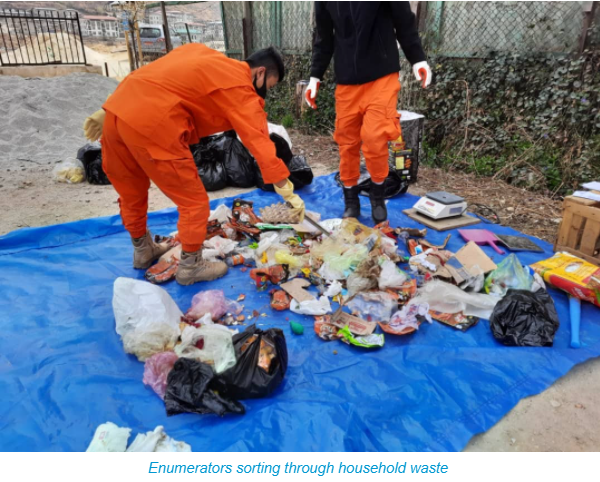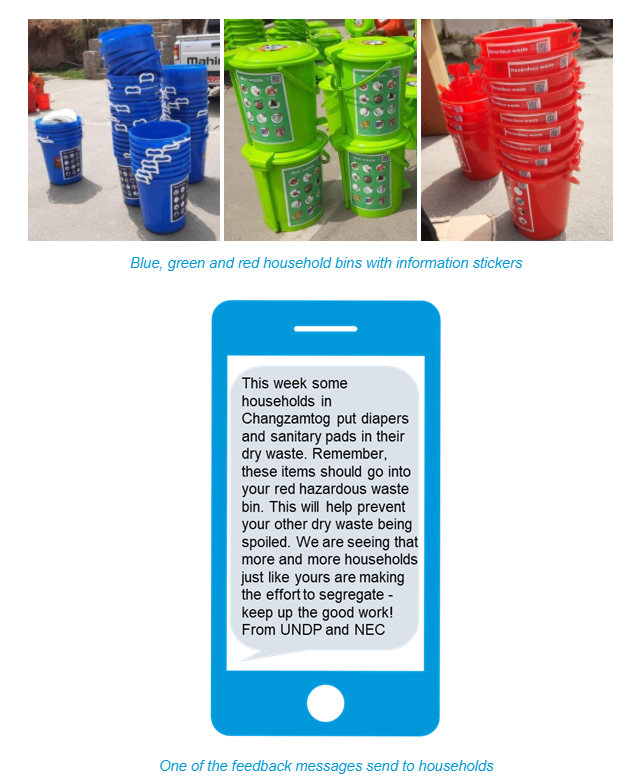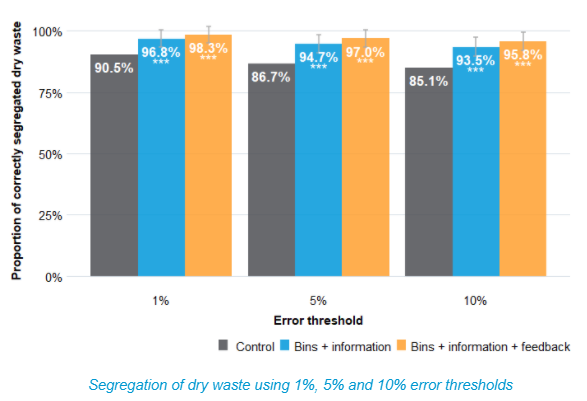Which of the following disposal options would you pick for a lightbulb?
- 🗑️ Dry waste
- 💧 Wet waste
- 🤷 Neither dry waste nor wet waste
How confident are you? Are you even a little bit uncertain?
Uncertainty is an issue— if we don’t know what the right option is, we are often inclined to take the path which incurs the lowest effort. This status quo bias is bad news for recycling, because it means people may be sending recyclable refuse to landfill.
Uncertainty is also legitimate. We have been working in Bhutan to support the Waste Management Flagship Program, and found that our partners in UNDP, the government environment agency NECS, and local waste management providers, all had slightly different lists of which items belonged in dry, wet or hazardous waste. Even the experts don’t always agree!
But as much as having certainty about which items go in which type of waste is important, households also need to have an easy way to actually segregate their waste. For our project, we wanted to encourage better segregation of waste at home. However, we did not think traditional communications alone were the solution— instead, we wanted to adjust the choice environment to make segregating as straightforward as possible. Fundamentally, we wanted to reduce the uncertainty around segregating, as well as make it easier, because we thought that would translate into better segregation and recovery of dry, recyclable waste.
We were in luck, because the Royal Government of Bhutan was already considering an intervention perfect for changing the choice environment. They were exploring whether to give every household recycling bins— blue for wet, green for dry, and red for hazardous – but they weren’t sure if it would be effective in improving waste management. How could they be sure that the benefit would outweigh the cost?
BIT helped the UNDP, NECS, GNHC and Thimphu Thromde to run a field experiment with approximately 600 households to answer exactly this question. This involved us working with a large group of volunteer enumerators who spent 4 weeks acting as the waste management service for two thromde in Thimphu. They collected household waste once per week, weighed the waste bags, and checked the quality of segregation.

We randomised households into three conditions:
- Approximately 200 households received bins with stickers giving information to make it easier for households to segregate correctly.
- Approximately 200 households received bins with stickers as well as feedback messages to make it clear where households were making segregation errors so they could correct their behaviour.
- Approximately 200 households received nothing, acting as our “control group” to measure current or baseline levels of waste segregation.

We found that, compared with our control group, households that received bins with information increased the quality of their dry waste segregation by between 6.3 and 8.4 percentage points, and households that received bins as well as feedback messages increased the quality of their dry waste segregation by between 7.2 and 10.7 percentage points. The ranges depend on the error threshold used: weighing garbage is not an exact science, but it is exactly the science that was needed.

The results of this experiment are helping to inform the next phase of the Waste Management Flagship Program, and in particular, to make the case both for distributing bins to households as well as installing communal bins for apartment buildings.
Let us know if you’re looking for ways to improve waste segregation, and are interested in testing what works.
This experiment was funded and co-ordinated by the United Nations Development Programme (UNDP). We would like to thank the National Environment Commission Secretariat (NECS) and the Gross National Happiness Commission (GNHC) from the Royal Government of Bhutan, and Thimphu Thromde, for supporting this experiment.






